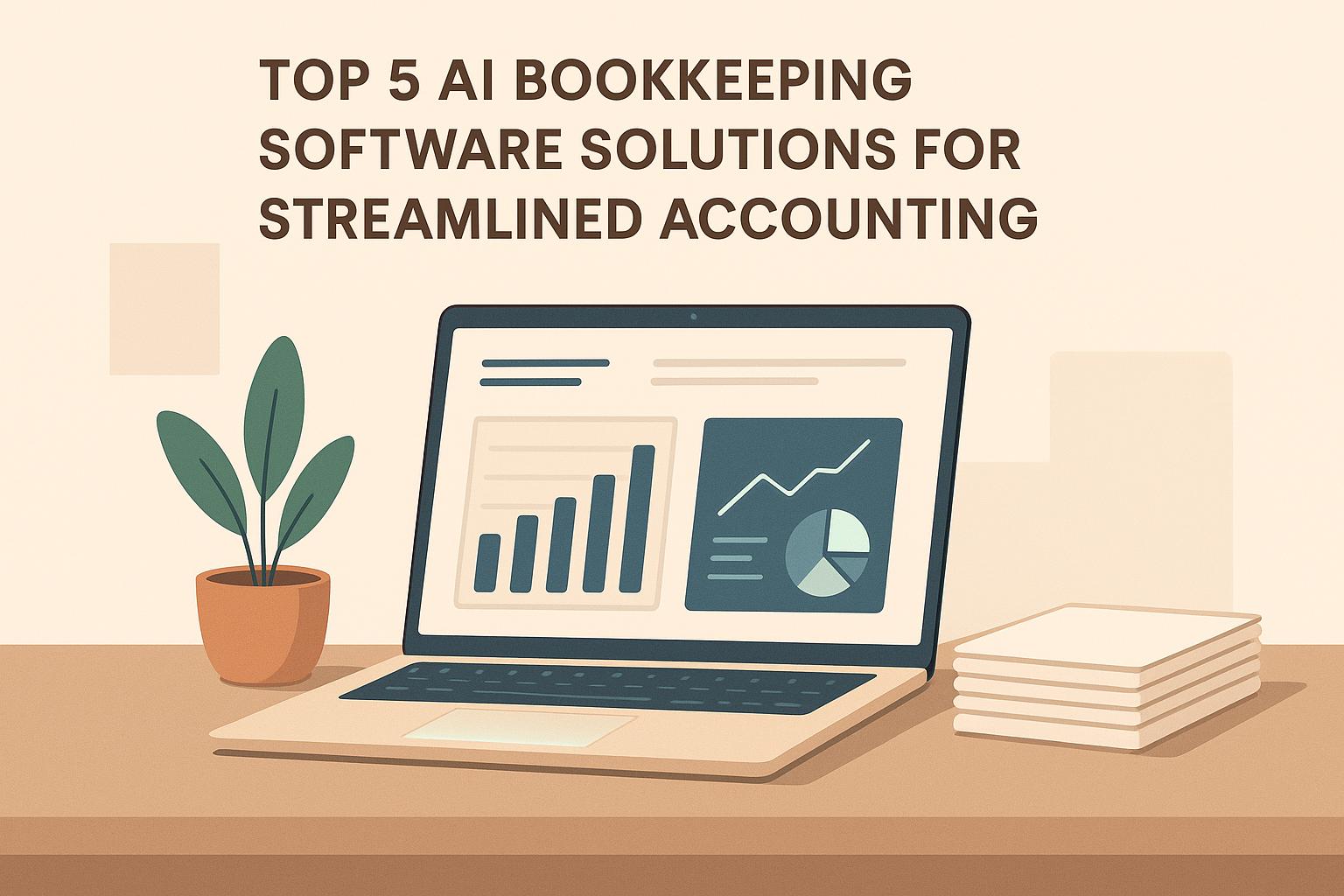Here’s a quick breakdown of the biggest hurdles businesses face and how to overcome them:
- Data Problems: Poor data quality disrupts AI projects. Fix it with strong governance, automation, and centralized systems.
- Network Readiness: 86% of enterprise networks aren't AI-ready. Invest in scalable cloud platforms and robust infrastructure.
- Employee Resistance: 33% of workers fear job loss from AI. Offer clear benefits, tailored training, and emphasize collaboration.
- Scaling Issues: AI workloads are growing fast. Plan for higher power density, advanced cooling, and real-time performance tracking.
- Ethics & Compliance: Bias and regulations are major concerns. Use diverse datasets, regular audits, and document all processes.
Quick Stats:
- AI could add $2.6–$4.4 trillion annually to the global economy.
- Generative AI market to grow from $10.9B (2023) to $167.4B by 2033.
- By 2025, AI will create 97M jobs, even as it eliminates 85M roles.
Key Takeaway:
To succeed with AI, tie projects to business goals, prioritize data quality, engage employees, and plan for scalability and compliance. These steps ensure AI works for your business, not against it.
The 3 Challenges to AI Implementation in the Enterprise
Data Integration and Quality
Data integration issues can seriously disrupt AI projects. In fact, poor data management costs organizations an average of $15 million every year, with 60% of AI failures linked to data quality problems.
Common Data Integration Issues
Poor data quality can reduce operational efficiency by 15-25%. Here are some of the main challenges businesses face:
| Challenge | Impact | Solution |
|---|---|---|
| Data Silos | Scattered information across teams | Use a centralized data warehouse |
| Format Inconsistencies | Mismatched data structures | Standardize ETL processes |
| Real-time Integration | Slower insights and decisions | Implement Change Data Capture (CDC) |
| Security Concerns | Risks of breaches and non-compliance | Apply advanced masking and encryption |
"Organizations will be increasingly differentiated by the data that they own." - David Rowlands, KPMG's global head of AI
Tackling these problems requires strict quality controls. With the right approach, businesses can turn data quality into a strength.
Data Quality Best Practices
Companies with strong data governance see a 20% boost in data quality, while those using ETL best practices report 25% higher data accuracy. Here’s how to address data quality challenges:
-
Adopt Strong Data Governance
Standardize how data is managed with clear, enforced policies. -
Set Up Continuous Monitoring
Use monitoring systems to evaluate:- Accuracy and completeness
- Consistency in formats
- Update frequency
- Security compliance
-
Automate Key Processes
Use data integration tools with automation capabilities for:- Validation and cleansing
- Standardizing formats
- Detecting and correcting errors
- Monitoring compliance
"Data integration is the process of consolidating and transforming data from diverse sources - internally and externally - into a standardized, usable, comprehensive, and unified view."
User Adoption and Training
Employee pushback is one of the biggest obstacles to AI implementation, with 33% of workers identifying resistance to change as a major issue. Tackling these challenges is critical for successful AI adoption.
Why Employees Resist AI
Around one in three employees worries about job loss, while 94% of senior leaders are concerned about AI's complexity.
Here are some of the main reasons for resistance:
| Barrier | Percentage | Concern |
|---|---|---|
| Preference for Current Methods | 26% | Comfort with familiar workflows |
| Job Security Concerns | 33% | Fear of automation replacing roles |
| Tech Overwhelm | 94% | Difficulty in learning complex tools |
| Poor Communication | $11,000-$15,000* | Annual cost per employee |
*Estimated cost of miscommunication during AI rollouts
"One way you can minimize fear is by clearly differentiating jobs from tasks. AI is a great tool for performing certain, often monotonous, tasks in a workflow - like summarizing content or creating outlines - not for replacing entire jobs."
– Patrick Saul, solutions consultant at Lucid
To address these issues, businesses need focused strategies that encourage employees to embrace AI.
Steps to Improve User Acceptance
For AI to succeed, companies must prioritize employee engagement and transparency. For example, Equinix achieved over 90% adoption of Microsoft Teams while boosting their Employee Net Promoter Score to 96%.
Here are some proven tactics to improve user acceptance:
-
Highlight Clear Benefits
Show how AI aligns with business goals and improves workflows without threatening jobs. Employees are more likely to embrace AI when they see its practical value. -
Offer Tailored Training
Programs like "Human+AI: Practical AI for Learning Leaders" and "AI for Everyone Academy" by GP Strategies help employees build confidence and competence. -
Encourage Experimentation
Promote a culture where trying new tools is celebrated. For instance, over 90% of Palo Alto Networks' employees use their AI assistant, Sheldon, to simplify tasks.
"The key to successful AI adoption is not in the complexity of the algorithms, but in how seamlessly they integrate into the organizational processes, augmenting and enhancing human decision-making."
– Ciaran Connolly, ProfileTree Founder
By 2025, AI is expected to eliminate 85 million jobs while creating 97 million new ones. This underscores the importance of preparing employees for evolving roles rather than focusing on job displacement. Companies that prioritize training and change management often achieve better adoption rates and higher return on investment.
For instance, Jamf saw a 30% adoption rate by framing their AI tool as a supportive resource rather than an imposed requirement. These strategies set the stage for deeper AI integration across organizations.
sbb-itb-ca9a050
Scaling AI Systems
Once user adoption challenges are addressed, the next big step is scaling AI systems to handle growing demands. By 2030, it's estimated that 70% of total data center capacity will be dedicated to AI workloads. This underscores the pressing need for infrastructure that can scale efficiently.
Growth Planning for AI
Data centers today average 17 kW per rack, but this is expected to rise to 30 kW per rack by 2027. Here's a quick snapshot of current and future infrastructure needs:
| Infrastructure Component | Current State | 2027 Projection |
|---|---|---|
| Average Power Density | 17 kW/rack | 30 kW/rack |
| AI Training Models | 80+ kW/rack | Higher demands expected |
| Data Center Growth Rate | 19–22% annually | Continued expansion |
To manage this growth effectively, consider the following:
- Cloud Platform Integration: Use platforms like AWS or Azure for storage that scales as needed.
- Power Management: Upgrade to 48-volt power supply units to cut energy losses.
- Cooling Solutions: Implement advanced cooling systems, such as liquid cooling, to handle the heat generated by dense racks.
With these strategies, infrastructure can scale to meet demand while maintaining reliability.
Performance Tracking Methods
Scaling infrastructure is only half the battle. To ensure efficiency and control costs, performance tracking is vital. Automated tools can monitor key metrics like CPU, GPU, memory, and latency. Techniques like model quantization and load balancing help optimize resources, while tools like Kubernetes enable real-time, dynamic resource allocation.
| Scaling Approach | Benefits | Best Use Case |
|---|---|---|
| Horizontal Scaling | Increases throughput and fault tolerance | High-traffic periods |
| Vertical Scaling | Easier to manage | Resource-heavy tasks |
| Serverless Functions | Cost-effective, automatic scaling | Variable workloads |
For example, financial institutions have used serverless scaling to implement real-time anomaly detection, aligning costs directly with usage.
"AI scalability directly supports faster time-to-value by optimizing processes and accelerating results." – Lumenalta
To keep systems running smoothly, organizations should:
- Track model drift and set up automatic retraining when necessary.
- Build feedback loops for continuous improvement.
- Perform regular audits to ensure compliance and performance standards are met.
- Keep detailed performance logs and document system updates.
Ethics and Compliance in AI
As AI adoption grows - already embraced by 73% of U.S. companies - the need to address ethical and legal challenges becomes more pressing. Beyond technical hurdles, organizations must ensure responsible implementation.
Reducing AI Bias
AI bias is a recurring issue that can skew decisions. As James Hendler points out, "AI can be used for social good. But it can also be used for other types of social impact in which one man's good is another man's evil. We must remain aware of that".
| Bias Source | Mitigation Strategy | Implementation Tool |
|---|---|---|
| Training Data | Use diverse datasets | AI Fairness 360 toolkit |
| Algorithm Design | Conduct regular bias tests | Automated monitoring systems |
| Infrastructure | Calibrate sensors | Quality assurance protocols |
| Human Factors | Build diverse teams | Unconscious bias training |
To tackle bias effectively, organizations can focus on these areas:
- Data Quality Management: Prioritize high-quality training data and remove biased data at every stage.
- Continuous Testing: Use real-world testing and gather user feedback to refine systems.
- Team Diversity: Include diverse perspectives in model training teams to improve fairness.
These steps not only reduce bias but also help meet legal and ethical expectations.
Meeting Regulatory Standards
Regulation is another critical area. While the EU has introduced structured frameworks like the AI Act, U.S. regulations are less cohesive, with only about 25% of states enacting AI-specific laws.
| Location | Regulation | Key Requirements |
|---|---|---|
| Illinois | AI Video Interview Act | Requires candidate consent for AI-based evaluations |
| New York | Local compliance law | Sets criteria for automated hiring tools |
| EU | AI Act | Focuses on protecting fundamental rights |
To stay compliant, organizations should:
- Define clear governance roles for compliance oversight.
- Conduct regular audits to evaluate fairness.
- Document AI systems in a centralized manner.
- Strengthen data protection protocols to mitigate risks.
Marco Iansiti from Harvard Business School highlights the importance of cautious data retention to reduce cybersecurity vulnerabilities.
AI Meadow Solutions Overview
AI Meadow: Professional Services Automation
AI Meadow provides tailored AI tools designed to address workflow inefficiencies, improve integration, and scale operations. These solutions help teams save over 10 hours weekly while speeding up deployment processes.
| Challenge Area | AI Meadow Solution | Impact Metrics |
|---|---|---|
| Integration | Custom workflow analysis | 10+ hours saved weekly |
| Scalability | Flexible AI architecture | Supports long-term growth |
| Implementation | Smooth integration process | Faster deployment times |
| Customization | Industry-specific solutions | Optimized for unique needs |
By directly addressing these key challenges, AI Meadow ensures businesses can streamline operations and achieve their goals efficiently.
"With AI Meadow's automation, we've been able to scale faster than ever before."
How AI Meadow Works
AI Meadow follows a clear, step-by-step process to deliver impactful results:
-
Workflow Analysis
The process starts with a detailed review of your current operations to pinpoint areas where automation can make the biggest difference. This ensures inefficiencies are effectively addressed. -
Custom Solution Design
AI Meadow creates solutions that fit seamlessly into your existing systems. As Sweet's CEO Toni Witt puts it:"AI Meadow has revolutionized our workflow with their automation solutions."
-
Performance Optimization
The team focuses on continuous improvement to keep solutions efficient and scalable. Their tools reduce repetitive tasks, simplify workflows, and boost overall productivity, paving the way for sustainable growth.
AI Meadow’s structured approach tackles common AI challenges head-on, delivering clear and measurable results. These solutions align perfectly with the broader strategies mentioned earlier, ensuring businesses can adopt AI smoothly and effectively.
Conclusion
Implementing AI in professional services requires a well-thought-out plan. While 80% of companies now use generative AI, only 14% have a clear strategy in place. This highlights the need for a detailed roadmap from the beginning.
The accuracy of AI depends heavily on high-quality data. Without it, the results can be unreliable. According to McKinsey, 40% of businesses are increasing their AI investments, and their phased approach with tailored solutions has shown measurable success.
Here are a few key factors for success:
- Clear Alignment with Goals: Tie AI projects directly to business objectives to achieve measurable results.
- Role-Specific Training: Offer training suited to different roles and skill levels within the organization.
- Leadership Support: Gain backing from executives and appoint AI advocates within the team.
Addressing challenges like data quality, user adoption, scalability, and bias requires a focused strategy. Companies should remain flexible while adhering to ethical and regulatory standards. Notably, 87% believe AI improves customer experience and efficiency, reinforcing the importance of scalable and effective implementation that delivers lasting benefits.
"The key to successful AI adoption is not in the complexity of the algorithms, but in how seamlessly they integrate into the organisational processes, augmenting and enhancing human decision-making".
"When forging a roadmap for AI adoption, consider it a living document, one that evolves in concert with technology advancements and your organisation's growing proficiency in AI. This agility is what elevates a strategy from good to great." - Stephen McClelland, ProfileTree's Digital Strategist


